Northern Vietnam
Hanoi Captital
Mai Chau
No trip to Ha Giang is complete without conquering the Lung Cu Flagpole, Vietnam’s northernmost point. The journey to reach this iconic landmark promises you deep insights about the land’s history and unforgettable memories!
Lung Cu Flagpole is located on the top of the Dragon Mountain in Lung Cu Commune, Dong Van District, about 3 kilometers from the northernmost point of Vietnam. This flagpole is far more than just a marker of territorial sovereignty; it is a sacred symbol deeply intertwined with the essence of Ha Giang’s land and people.

In recent years, Lung Cu Flagpole has become a must-visit destination for countless domestic and international tourists embarking on the iconic Ha Giang Loop, eager to witness this landmark firsthand.
The Lung Cu Flagpole was first built during the reign of Ly Thuong Kiet and was initially a simple cypress stake. In 1887, the flagpole was rebuilt and continued to be restored in 1992, 2000, 2002, and 2010, each iteration enhancing its size and scale.
Currently, the flagpole stands over 33 meters tall. Its octagonal base and pedestal are adorned with eight intricate reliefs simulating the Dong Son bronze drums, with motifs illustrating Vietnamese history and showcasing the rich customs of Ha Giang’s ethnic minorities.
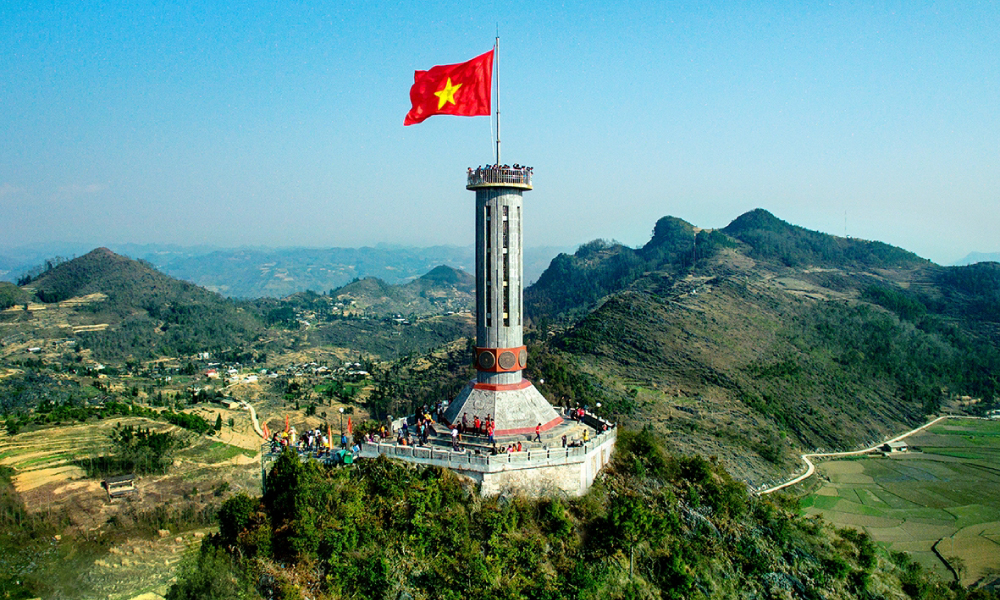
At the top of a nearly 13-meter-high flagpole, the Vietnamese national flag hangs. This flag is truly impressive, measuring 9 meters in length by 6 meters in width, covering a total area of 54 square meters, symbolizing the 54 ethnic groups living together in Vietnam.
Here’s a fascinating detail about the Lung Cu Flagpole: the flags themselves are replaced quite often, typically every 7 to 10 days. This frequent change is crucial because the strong winds atop Dragon Mountain cause the flags to rapidly wear and tear. The new flags are kept at the border post at the mountain’s base, whose main task is to protect the Lung Cu border.
The name Lung Cu has various explanations, but is commonly linked to “Long Cu,” meaning “where the Dragon lives,” inspiring the Dragon Mountain where the flagpole was built.
The road to the flagpole is an experience in itself, via a path of over 800 steps, divided into three stages. These steps stretch from the mountain’s base all the way to the flagpole. Between stages, there are rest places that offer visitors a chance to catch their breath and take in the immense beauty of Ha Giang’s nature afar.

At the foot of the flagpole, visitors can explore the Lung Cu souvenir houses. Here, an insightful display of labor tools, traditional costumes, and cultural products offers a window into the lives and traditions of the region’s diverse ethnic groups.
About 160 kilometers from Ha Giang City Center, the road to Lung Cu Flagpole is pretty straightforward. Visitors will take National Highway 4C towards Quan Ba, then continue to Dong Van. From here, head to Sa Phin commune and follow the signs to Lung Cu. Do note that the final section is a steep, winding road onto Dragon Mountain.
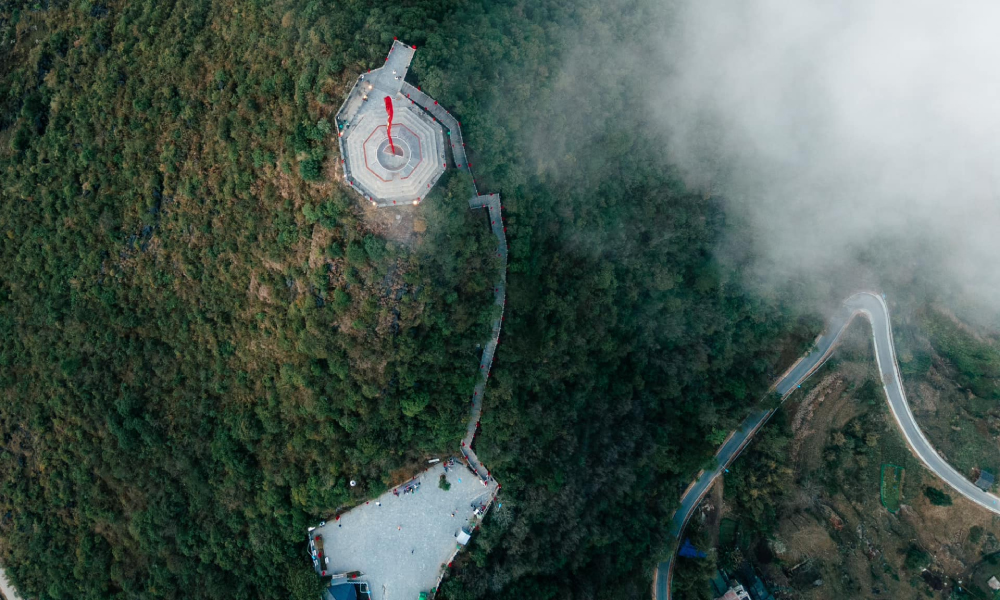
For those who prefer not to navigate the mountain roads themselves, Fola Travel offers Ha Giang tour packages that include a visit to the Lung Cu Flagpole, along with other stunning Ha Giang destinations such as Dong Van Ancient Town and Nho Que River.
Our tours prioritize your comfort and convenience, providing hassle-free shuttle services between Hanoi and Ha Giang, as well as comfortable accommodations and delicious meals. With Fola Travel, you can sit back, relax, and fully enjoy your Ha Giang experience.
See more: Ha Giang tours for your 2025 vacations!
The small village of Then Pa is located around the foot of Dragon Mountain, looking up at the Lung Cu Flagpole. This village is a vivid reflection of the traditional identity of the Mong people, with its traditional earth houses and tiled roofs peeking out from under the lush canopy of green trees.
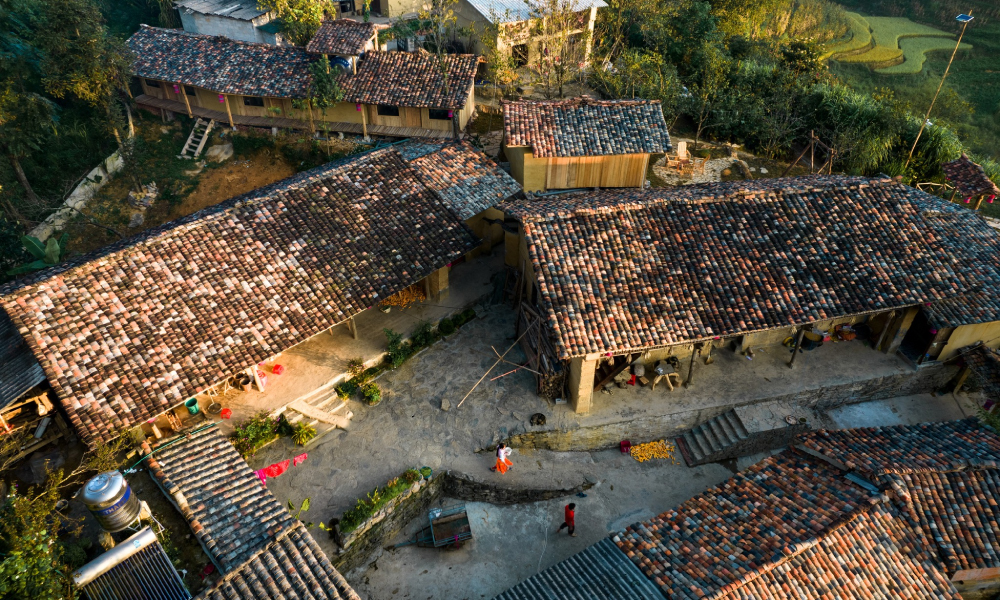
In Then Pa, visitors will be surprised by the tranquility and leisurely rhythm of life here, a stark difference from the urban hurry, as if time has forgotten this beautiful village.
Nestled near the foot of the Lung Cu Flagpole, Lo Lo Chai village is a beloved destination for many visitors to Dong Van.
Its main appeal is the distinctive earthen house architecture, complete with stone-paved yards and fences. Many homestays here retain this traditional style, offering guests the chance to stay for a night and wake up early to admire the incredible sunrise over Lung Cu Flagpole through the window.

Every Friday, ethnic people around the area gather at the market under the Lung Cu Flagpole to exchange goods, including herbs, fabrics, and colorful clothes. The market also sells delicious local specialties such as grilled rice cakes, sweet potato cakes, and dumplings.
Immerse yourself in the bustling atmosphere, you will quickly discover the warmth and authentic charm of the local lifestyle.

Roughly a 50-minute motorbike ride from the Lung Cu Flagpole, Dong Van Ancient Town stretches nearly 1 kilometer with nearly 40 antique houses built next to each other, featuring traditional architecture with yin-yang tiled roofs and stone floors.
The streets are decorated with colorful lanterns, creating a captivating scene straight out of a movie.
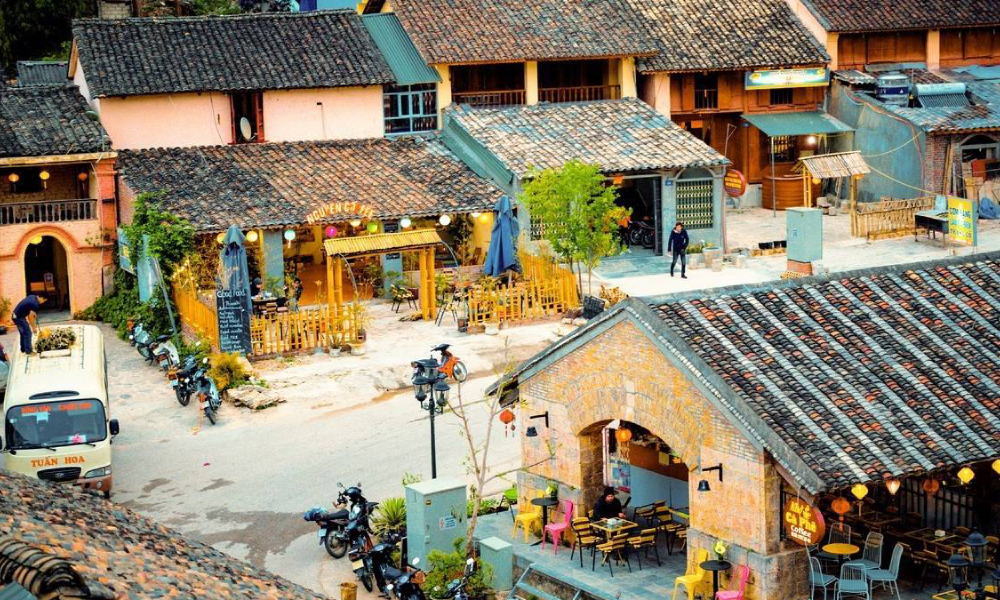
Dong Van Karst Plateau is the first UNESCO Geopark in Vietnam and the second in Southeast Asia.
Spanning across four picturesque districts – Quan Ba, Yen Minh, Dong Van, and Meo Vac – this geopark is renowned for its wild and poetic beauty, and is affectionately called a “gray paradise” amidst Ha Giang’s dramatic mountains and forests.
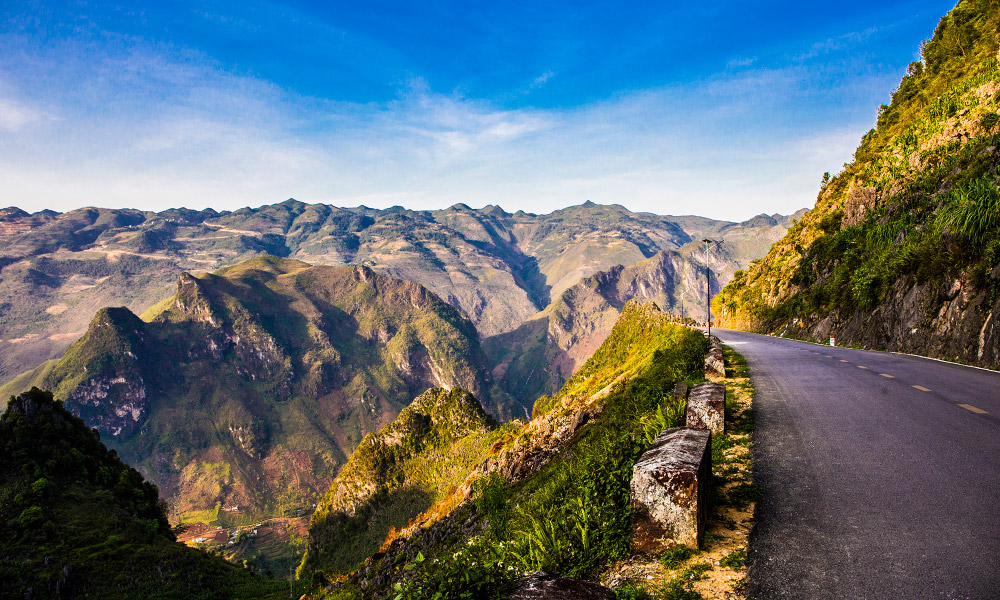
Known as “the land of blooming stones,” Sung La Valley presents a stunning panorama: a lush green valley softly embraces small traditional homes and a gracefully winding mountain pass.
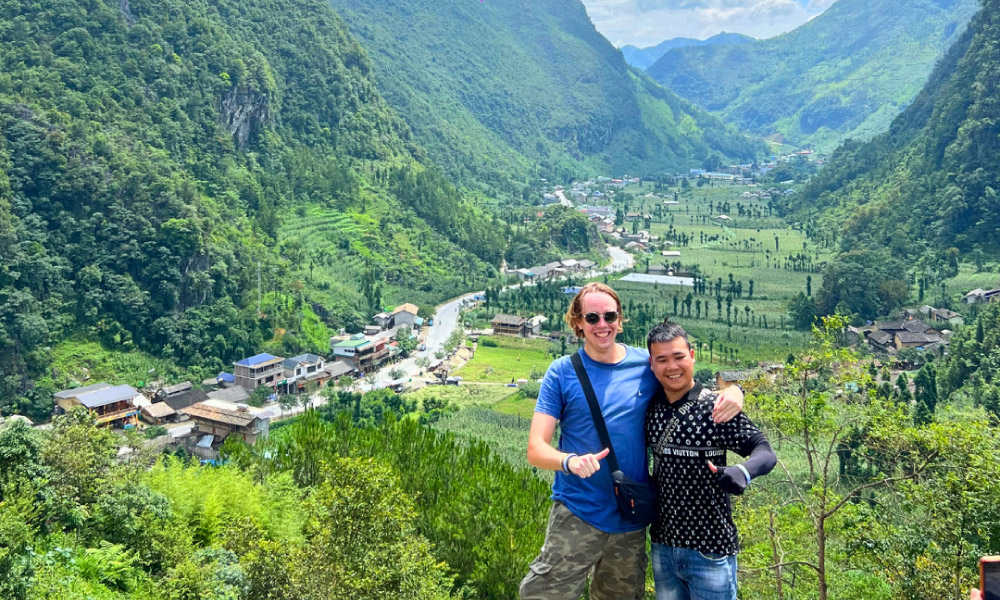
Yes, there is an entrance fee to visit the Lung Cu Flagpole. The ticket price is US$1.6 per adult and US$0.6 for children. For added convenience, visitors also have the option to rent an electric car to reach the flagpole for an additional US$0.6 per trip.
When you book a tour with Fola Travel, all sightseeing fees, including the Lung Cu Flagpole entrance, are conveniently included in the total price, offering you a completely worry-free experience!
To have memorable photos at Lung Cu Flagpole, consider wearing a Vietnamese flag shirt or a traditional “ao dai”. You’ll easily purchase or rent these shirts at souvenir shops throughout Ha Giang.
To reach the Lung Cu Flagpole, you will need to climb about 300 steps. Therefore, visitors should choose comfortable sneakers for easy movement and to prevent foot pain. When climbing, be very careful, avoid pushing and jostling if traveling in a large group, as it can be very dangerous.
SHARE YOUR OPINION